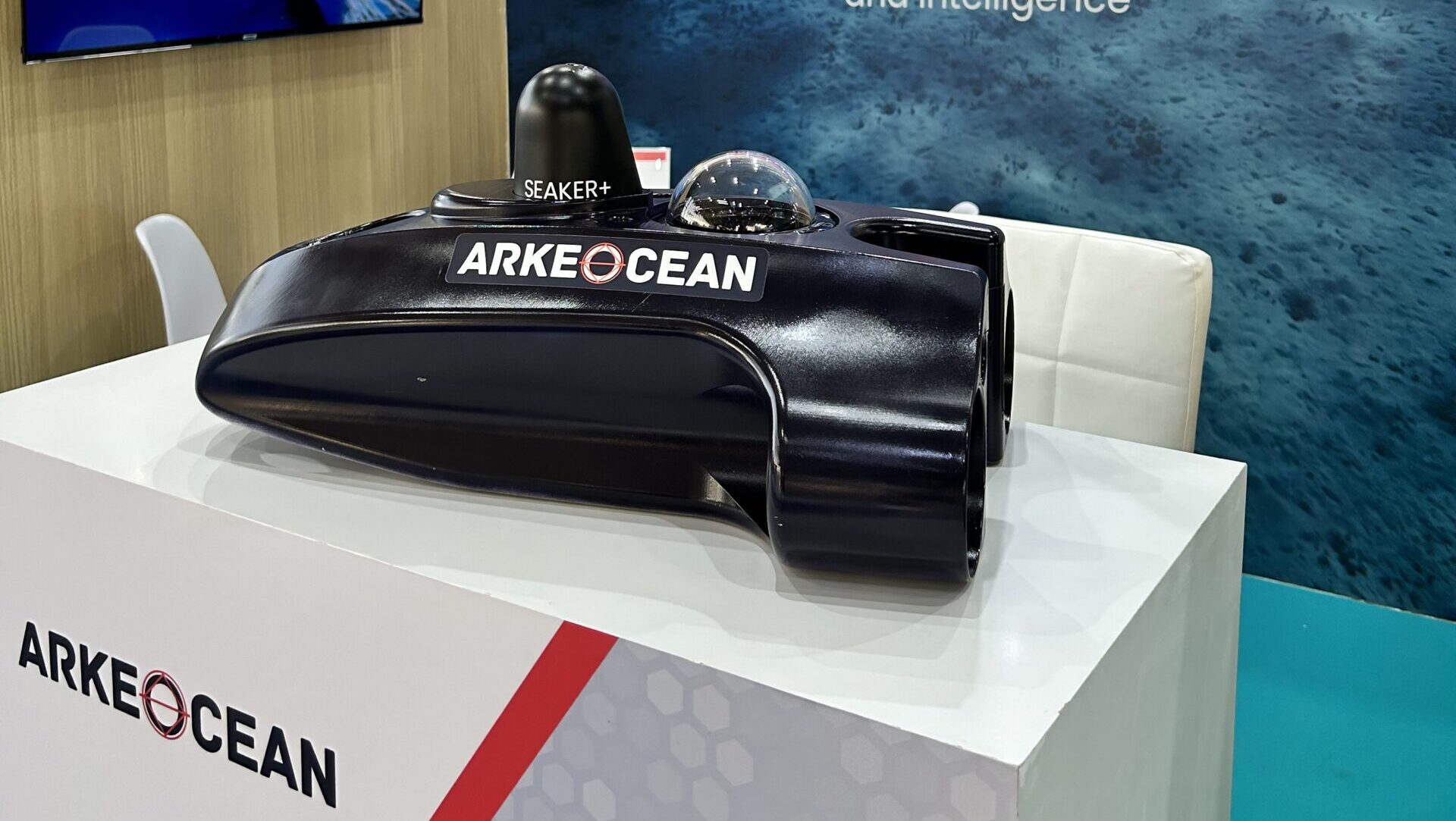
France’s Arkeocean displays the micro Autonomous Underwater Vehicle (AUV) Olmek at the World Defense Show. (Arkeocean)
WORLD DEFENSE SHOW 2024 — A French family-run underwater microdrone startup is challenging international navies to rethink subsurface intelligence, surveillance and reconnaissance (ISR) missions and consider using a host of smaller unmanned systems in swarms, designed to listen for enemy ship’s acoustic “signatures” by staying on the seabed or in-current en masse for months at a time.
Arkeocean, based north of Nice and displaying its wares here at the World Defense Show in Saudi Arabia this week, said it recently completed French navy sea trials of the company’s Lelantos loitering Autonomous Underwater Vehicle (AUV) swarm in Toulon, proving the new platform’s proof of concept.
“We took part in April [2023] in the French [Navy] exercise Orion … where we deployed a small swarm. And following that, in December, we did further trials that were more expansive, again with the French navy using Lelantos,” Virginie Brizard, chief marketing officer at Arkeocean told Breaking Defense at the show.
Measuring 70cm, or just over two feet, in length, the manufacturer says Lelantos can be programmed to cover an underwater perimeter of interest using a patented acoustic listening device dubbed Seaker, designed to record acoustic signatures of surrounding vessels that can be fed back to naval commanders, who in turn determine how to take action against any threats.
“Acoustic recording is the most efficient way to look for data, if the AUVs recognize one of the signatures they need to recognize, they come up to the surface … in around three seconds,” Brizard said. “When you’re deploying a [single] remote operating vehicle or autonomous underwater vehicle, you’re not covering a lot of ground, so our approach has been to scale up.”
A smaller AUV called Olmek, measuring just 51cm (20 inches), has been designed to act as part of a “Bottom Ocean Sentinels” swarm to create “underwater barriers” of protection from the seabed to the current.
Based on that concept, “strategic sites” could be more effectively protected against naval threats, instead of the more conventional method of “relying on what’s happening above water” with surface assets, according to Brizard.
The company claims a number of contracts have been signed for the AUV’s, though for commercial purposes customers cannot be disclosed. A total of 25 platforms for a swarm series delivery in Q1 2024 are currently in production from Arkeocean’s Brittany facility, with a plan to ramp up production to a “few hundred” units by the end of 2025, Brizard said. Both the customer and program for the 2024 swarm delivery are also confidential.
At a competitive level, though the micro AUV market is relatively niche, new startups are beginning to pop up, said Brizard, and she expects a similar trend to the proliferation of uncrewed aerial systems and uncrewed ground combat systems to soon emerge in the naval domain.
Collaborating with Saudi Arabian suppliers would be of interest, she said, to support new business, and which would go hand in hand with the localization agenda Riyadh has laid out, based on Vision 2030, which targets spending over 50 percent of military funding on domestic suppliers by 2030.
Those prospects are helped, said Brizard, by a previous partnership with energy giant Aramo, where Arkeocean worked on a project known as Spicerack involving acoustic underwater listening.





















